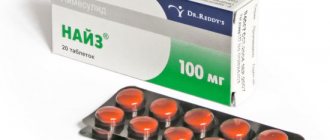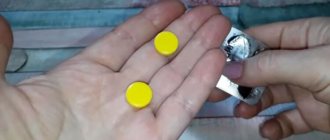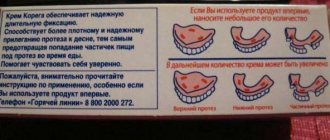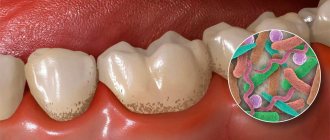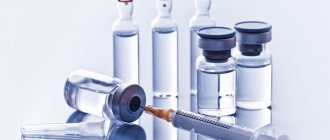Halitosis
(halitosis; from Latin halitus - breath and Greek -osis - disease) or halitosis is a term used to describe a noticeably unpleasant odor when exhaling.
It is known to be the third most common reason, after tooth decay and gum disease, that prompts people to visit the dentist.
For a person with halitosis, the symptoms are invisible because the olfactory receptors become accustomed to the stench. In most cases (90%) the cause of bad breath is in the mouth.
The intensity of this phenomenon can change throughout the day due to the consumption of odorous foods such as cheese, fish, seasonings, garlic, alcohol, as well as smoking and, in general, overeating.
Since self-cleaning does not occur in the mouth during sleep, halitosis is usually more intense in the morning (“kittens wrote in their mouth”).
Bad breath can be ephemeral (going away after rinsing with a freshener or brushing your teeth) and persistent.
Sustained (chronic, persistent) halitosis is present in 25% of the population.
Causes of halitosis.
In the mouth.
There are more than 600 types of microorganisms in the average person's mouth. About a hundred of them can produce a stench even when grown in a laboratory.
Solobacterium moorei is a microorganism that is recognized by some researchers as the most active producer of stench.
This stench is produced mainly due to the decomposition of proteins into individual amino acids with their further decomposition into odorous substances.
For example, the decomposition of cysteine and methionine produces hydrogen sulfide and methyl mercaptan, respectively. Volatile sulfur compounds have been shown to be statistically related to the degree of halitosis and usually disappear with adequate treatment.
1.1. The tongue is where odor in the mouth appears in most cases.
A significant amount of natural microflora is localized in the villi and folds of the back of the tongue, especially on the back (root of the tongue).
This part of the tongue is relatively poorly cleaned and the bacterial population multiplies here on food debris, dead cells and nasal mucus.
Such a nutritional environment on the back of the tongue is ideal for anaerobic bacteria that produce a specific gas, the components of which are:
- putrid odor of indole substances,
- skatola,
- polyamines;
- “rotten egg” smell of volatile sulfur compounds (hydrogen sulfide, methyl mercaptan, allyl methyl sulfide and dimethyl sulfide).
Cleaning the tongue.
Chewing gum, sprays, rinses, etc. can only temporarily muffle the odor produced by bacteria on the root of the tongue, but cannot eliminate halitosis because they do not eliminate its cause.
To neutralize the release of the above-mentioned volatile sulfur compounds, it is necessary to remove plaque from the back of the tongue along with the aerobic and anaerobic microorganisms contained in it.
Typically, a tongue scraper or toothbrush is used for this.
1.2. Gum diseases (periodontitis).
There is some controversy regarding the role of gum disease in the formation of bad breath. However, advanced periodontitis is always the cause of halitosis.
The waste products of anaerobic bacteria developing in periodontal pockets have a disgusting odor and, as has been clinically proven, lead to severe halitosis.
Removing calculus (tartar) and loose gums has been proven to significantly freshen the smell of your mouth. It is desirable that this event be accompanied by subgingival scaling, root planing and tissue irrigation with antimicrobial agents.
1.2.1. Particular attention should be paid to pericoronitis of the wisdom tooth.
- inflammation of the gums around the eighth tooth that has not fully erupted. After the exacerbation is relieved, it is reasonable to remove these teeth.
1.2.2.
Fetid sore throat and
Vincent's stomatitis.
Tonsils (chronic tonsillitis).
In general, suppuration from the tonsils is considered statistically insignificant in the occurrence of halitosis (only about 5%). About 7% of the population suffers from tonsillar plugs, small pieces of calcified material in the folds of the tonsils.
They smell extremely unpleasant and when released can cause halitosis.
Nasal passages.
The nose is the second major cause of halitosis due to sinusitis and foreign bodies. In this case, the smell rather comes from the nose and is different from bad breath.
Esophagus.
The cardiac valve between the stomach and esophagus may not close well when the stomach herniates into the esophagus, allowing acid and stomach gases to leak into the mouth. With diverticulosis (false pouch) of the esophagus, deposited food debris can cause halitosis.
Stomach
Rarely is the cause of halitosis; belching should not be confused with the latter. With reflux (backward release of stomach contents), an odor may appear.
Liver.
Hepatic respiration (fetor hepaticus) is a condition associated with portal hypertension and liver failure. In this case, odorous digestive products (mercaptan, ammonia, ketones), instead of being destroyed in the liver, enter the lungs and, accordingly, into the exhaled air.
The breath has a sweetish, fecal tint. In this case, the fight against symptoms is no longer relevant.
Lungs and bronchi in acute and chronic inflammation and tumors (carcinoma).
Other diseases:
- renal failure,
- diabetes,
- metabolic diseases.
How to identify the problem
Before we move on to considering the best remedies for halitosis, let’s figure out how to identify the problem yourself. The easiest option is to ask the opinions of loved ones who can be trusted to discuss such issues. But you can also identify the problem using independent tests:
- It is enough to take a simple tablespoon and lick it several times. The smell from the saliva that remains on it is approximately the same as the smell from your mouth, only from a spoon it will be several times weaker,
- you can lick your wrist and wait until it dries. After this, just bring your hand to your nose and evaluate the aroma - the smell from your mouth will be several times stronger.
You can use a spoon to determine the problem.
If there really is a symptom, and standard hygiene measures do not help in combating it, you need to establish its cause, and with this task you should go directly to the doctor. You can immediately contact a dentist or therapist, who, after a general examination, will refer you to a specialized specialist.
Diagnosis of halitosis.
Self-diagnosis.
Smelling your own breath is difficult due to the adaptation of the olfactory receptors, although many halitosis sufferers can smell it in others.
Sometimes people experience an unpleasant taste in their mouth, but this is not always accompanied by halitosis. Usually people reliably learn about the presence of halitosis from their loved ones or from their doctor.
Special diagnostics.
It is required if the possible causes of halitosis, especially in the mouth, have been eliminated.
2.1. Halitometer
This is a device that determines the amount of hydrogen sulfide in exhaled air. Other odorous agents, such as mercaptan, are not detected by this device.
2.2. Digital gas chromatograph
measures the molecular level of major halitosogenic substances.
Active components
Lollipops contain Lactoferrin, which is the most active glycoprotein of colostrum, plays an important role in the formation of immunity in the body, and is also involved in the supply and absorption of iron. Lactoferrin protects against microbes, viruses, fungi and has an anti-inflammatory effect on the entire respiratory tract. It has a disinfecting effect in the oral cavity and pharynx, reduces inflammation and oxidative processes at the level of the mucous glands, has a calming effect, relieves pain and soreness.
In addition, Septogal + Lactoferin STRONG contains Vitamin C, which is a strong antioxidant and anti-inflammatory agent. Participates in the formation of collagen, necessary for the normal functioning of gums and teeth. Vitamin C also promotes rapid healing of wounds after tooth extraction. Essential oils of menthol and eucalyptus have immunomodulatory, anti-inflammatory and antiviral effects, reduce swelling, have local anesthetic and anti-inflammatory effects.
The presence of a component such as Methylene blue in the composition of Septogal + Lactoferin STRONG ensures its action as an effective antiseptic with disinfecting and redox effects.
The combination of components such as lactoferrin and essential oils has a powerful effect on breathing, so from the first minutes you feel relief not only in the throat, but also in the sinuses (helps with a stuffy nose).
The product is also indicated in dentistry: for post-operative restoration of the oral cavity, tooth extraction and after any dental intervention for the purpose of prevention and local anesthesia.
Septogal + lactoferrin STRONG is recommended even for patients with diabetes, since it does not contain sugar.
Treatment and prevention.
1.
It is known that very few people observe sufficient personal hygiene measures necessary for fresh breath.
This is, firstly, adequate teeth cleaning using electric, sonic and ultrasonic toothbrushes and irrigators with quality control using special plaque indicators.
Secondly, it is advisable to clean the tongue with a scraper and brush. Medicinal rinses are also appropriate.
2.
Diet. When eating raw, hard vegetables and fruits, the oral cavity self-cleanses.
3.
High-quality regular, if necessary repeated, professional teeth cleaning with removal of plaque and stones using ultrasound and sandblasting (air-flo).
Sometimes deep scaling, root planing and gum margin management are required. In advanced cases, reconstructive gum surgery is used.
4.
Dental treatment and adequate dental prosthetics.
Drug therapy.
1.
Antimicrobial drugs.
2.
Probiotics. For example Streptococcus salivarius K12.
6. Traditional medicine.
Camomile tea.
Pour a teaspoon of chamomile flowers into a glass of boiling water, leave for 2 hours, strain. Rinse your mouth with freshly prepared chamomile infusion 3 times a day.
What can be done for prevention
To prevent the development of halitosis, it is enough to take a responsible approach to observing the rules of hygiene, maintaining the health and cleanliness of the oral cavity. As for preventive measures, experts in the field of dentistry and hygiene offer the following recommendations:
- drink more plain clean water - at least 2 liters per day,
- use a brush or a special scraper to clean the surface of the tongue - morning and evening,
- always have a breath freshener with you,
- use antiseptic rinses after morning and evening cleansing, after each meal (preventative),
- maintain cleanliness of the oral cavity - use a properly selected brush and toothpaste, do not skip daily brushing of teeth, use floss and irrigator to clean hard-to-reach places,
- eat more greens - they help neutralize unpleasant odors. Dilute your usual diet with ginger and celery, cinnamon - all these products are natural antioxidants and help normalize the balance of microflora in the oral cavity,
- visit the dentist at least twice a year - for preventive examinations and prof. hygiene. If you have any suspicious symptoms, immediately contact a specialist and do not self-medicate.
Drink more plain, clean water.
A good remedy for unpleasant odor should not only mask the symptom, but also help fight its root cause. To establish the source of all troubles, you must visit a doctor and undergo an appropriate examination. Only by identifying and then curing the hidden pathological process can you be guaranteed to get rid of this delicate problem.
Halitosis and exposed roots
Two recent studies show that volatile chemicals and the gas that causes halitosis have damaging effects on surrounding tissue.
The first study demonstrates the role of hydrogen sulfide (SH2), which causes periodontal cell death through apoptosis (fragmentation or programmed destruction).
Another study shows that the same hydrogen sulfide (SH2) accelerates the proliferation (reproduction) of bone-destructive cells (osteocasts).
These are cells that take part in the physiological (normal) remodeling of bone: the phenomenon of bone resorption, which allows, among other things, orthodontic movements, during which the activity of bone-building cells (osteoblasts) is balanced with the activity of osteoclasts.
Under the influence of hydrogen sulfide, cellular metabolism accelerates, triggering the mechanism of bone destruction under the influence of osteoclasts.
The balance is thus disturbed and bone resorption develops. This results in periodontal disease (periodontitis) and exposed roots.
The vicious circle is complete because periodontitis and exposed roots are a common cause of halitosis (bad breath).
Halitosis and pulpitis
Hydrogen sulfide, released during halitosis (bad breath), is also toxic to pulp cells. One study demonstrates that hydrogen sulfide profoundly disrupts the metabolism of the mitochondrial membranes of dental cells, causing cell death through apoptosis (breakdown into fragments).
Situated in the pulp chamber in the center of the tooth, the pulp is not isolated from the surrounding oral environment because exchange constantly occurs through dentin, a porous tissue, and enamel, which acts as a selective membrane.
Hydrogen sulfide penetrates and diffuses through the hard tissues of the tooth to negatively affect its vitality.
This phenomenon may explain the appearance of pulpitis (inflammation of the pulp) in intact (undamaged) teeth. It should be noted that tobacco smoke can have a toxic effect on the dental pulp through a similar mechanism.
In the case of pulpitis, divitalization or removal of the nerve is the only possible solution.
Information about the author of the method
Dr. Louis Malcmacher runs a private clinic in Cleveland, Ohio. He is also a researcher and consultant for Dentique Inc., a dental products and business consulting firm. Dr. Malcmacher is a frequent contributor to dental journals and has published numerous papers on adhesive resins in dentistry, bridges and crowns, dental practice management, periodontics, cosmetic dentistry and, most recently, the treatment of halitosis. He is also one of the authors of a popular monthly newsletter on new methods and materials, overhead reduction and practical management. Dr. Malcmacher is a panelist for the Association for Clinical Research, a visiting lecturer at the New York University School of Dentistry, editor of Dentistry Today, a speaker for the Academy of General Dentistry, a consultant to the American Dental Association's Council on the Practice of Dentistry, and has been named one of the Leaders in Advancement. Qualified by Dentistry Today magazine.
Dr. Malcmacher is an internationally recognized author and lecturer known for his thorough and entertaining style. He works closely with dental product manufacturers as a consultant and clinical researcher in the development of new products and techniques. For nearly two decades, Dr. Malcmacher has inspired his audience to truly enjoy being a dentist, providing the essential knowledge for excellent clinical and practice management. His group's dental practice has grown 45% since 1988.
Louis Jay Malcmacher DDS, FAGD www.medicus.ru
medicinform.net
How can a doctor help?
If halitosis occurred due to dental pathology and disease, a specialist will help you forget about this trouble forever. Let's consider step by step what the doctor can do:
- First, a full examination of the oral cavity is performed. The doctor identifies the presence of diseases, assesses the condition of the gums and teeth.
- Professional cleaning is mandatory, which is carried out using a device that supplies a powerful stream of water with abrasive particles.
- The dentist then removes the stones using ultrasound. It is not painful at all and does not cause discomfort.
- If caries is present, appropriate treatment and elimination of carious cavities is carried out. In most cases, composite substances are used for this purpose.
- If you have a rotten tooth that cannot be restored (perhaps it provokes bad breath), you must get rid of it. In this case, the dentist removes the unit.
- If gum disease occurs, the doctor carries out professional cleaning of the pockets and prescribes the correct and safe treatment.
In most cases, patients only need professional cleaning. Few people think that if their breath smells bad, it is caused by plaque and tiny particles of food that can get stuck between the teeth. In this case, the doctor will be able to help you in just one visit. Don’t hesitate, it’s time to say goodbye to your inferiority complex and discomfort when communicating with people.


